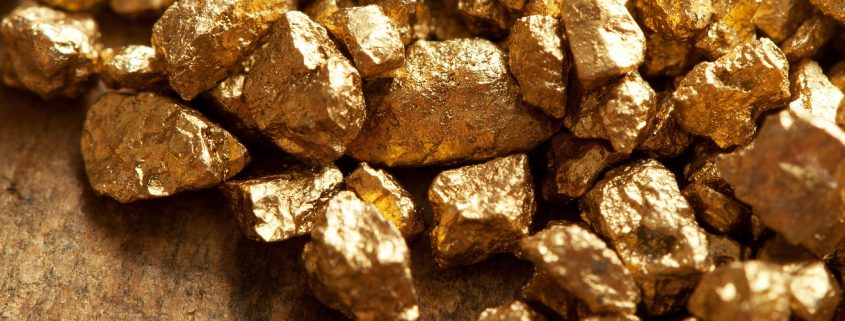RUSSIA BETS ON INTENSIFYING GOLD OUTPUT IN 2018 (Oymyakon)

The coldest place in Russia
In one of the coldest spots on earth, Oymyakon district of the Republic of Sakha in Russia, it is believed that gold outputs will very soon rise.
Yakutia (Oymyakon) in winter gets so cold that metal actually snaps. In the beginning, it gives an opportunity to examine the field and extract as much as gold as possible. When the weather is warmer people make a living by dredging the soil. Where they are finding slight amounts of gold.
Yakutia region is unusually rich with gold , but the surface is alluvial. That makes the process of digging gold really expensive. The extraction is done by alluvial mining. The process with digging mines which extract the gold ore from the surface will be the primar way to extract gold in 2018.This process is called HardRock mining.
First Two Ore Mining Capacities
Production at the first two mines is to be opened in a few months. That would be the first production there since the fall of the Soviet Union. One is being launched by GV Gold. With U.S. fund BlackRock and the European Bank for R& D among its shareholders, and another by the locally-owned Yantar group.
These non-native producers are opening mines in Yakutia, to help Russia keep its place. Russia is the worlds 3rd biggest gold producer. After China and Australia, and ahed of the U.S, who are in 4th place.
“It is always hard to move away from old traditions but all regions nearby… have already gone through it,” said Elena Andreyeva, who is a chief ore mining geologist at Yantar.
Market global gold prices are now $1,285 per ounce in London, down by around a third from their peak in 2011.
As Russian currency has also fallen, it makes the foreign investments way more attractive . Especially in the area dependent on gold. Also for the bulk of local revenues and the fact that it will be a challenging place to work.
Direct flights from Moscow to the main village of Oymyakon district do not exist. Yet it is possible that will soon change. Oymyakon is located 9300km east of Moscow. Temperatures there often fall below 50 Celsius.
The area Is so cold, that some locals have heated garages in order to keep their vehicles alive. If they go out in winter, they keep their engines running at all times so they don’t seize up.
Locals call it “the Pole of Cold.” The district claims the title of the coldest continually-inhabited settlement in the northern hemisphere.
The area was home to Soviet Union prisoners. They were made to pan the gold from local rivers with bare hands.
RETURNS

As a proportion of national gold production, alluvial gold has fallen to around 30 percent from 83 percent twenty years ago, according to the Russian Gold Industrialists’ Union.
In Oymyakon it is also declining. Still it accounts for the bulk of 9 tonnes of gold the district produced in 2016 when Russia produced a total 297 tonnes.
GV Gold’s new plant will start production in May. It is expected to produce up to 3 tonnes of gold a year. Including gold-bearing concentrate. GV Gold has put in $113 million for the first stage of investment in the mine, which will become the third of its type in the area.
“This would be the biggest gold mining and processing plant in the Oymyakon district,” said Alexander Tuluptsov, chief executive of the Tarynsky plant, told Reuters.
He expects GV Gold to see a return on its investment within five to six years.
Yantar’s Khangalas plant, located few kilometers away from the area of Oymyakon, will start operating in 2018. It should produce up to 1 ton of gold a year, including concentrate.
Nowadays, Yantar’s other alluvial gold production Producers first offer the gold to the Russian central bank and some of the surplus is exported. Russia exported around 30 t of gold last year, mainly to Europe, China and India, according to Russia’s Gold Industrialists’ Union. Which was 2.3 t in 2016, and this year it plans to produce around 1.8 t.
BLOOMING OUTPUT
“Hardrock mining is more stable and profitable and less dependent on weather and logistic issues than alluvial mining,” said Mikhail Leskov, director for mining practice at American Appraisal Russia.
Some other gold-ore mining projects will come on tap soon. Amongst them, Polyus, Russia’s largest gold producer has inspiring plans. It will commission its largest eastern Natalka gold deposit by the end of 2017. Ore mining has advantages over the seasonal alluvial mining. It is less related to weather, climate changes, and all the factors of nature.
Despite still beeing some way behind China’s 453.9 and Australia’s 298 tonnes of gold production last year, the new mines should help Russia meet forecasts by the Gold Industrialists’ Union for an increase in output by 8 tonnes this year.
That will lead Russia to way better position in 2017, and surely prepare it for 2018. The year when the capacities of Oymyakon will rise world’s Gold supply, coming straight from successful Russian projects.





Leave a Reply
Want to join the discussion?Feel free to contribute!